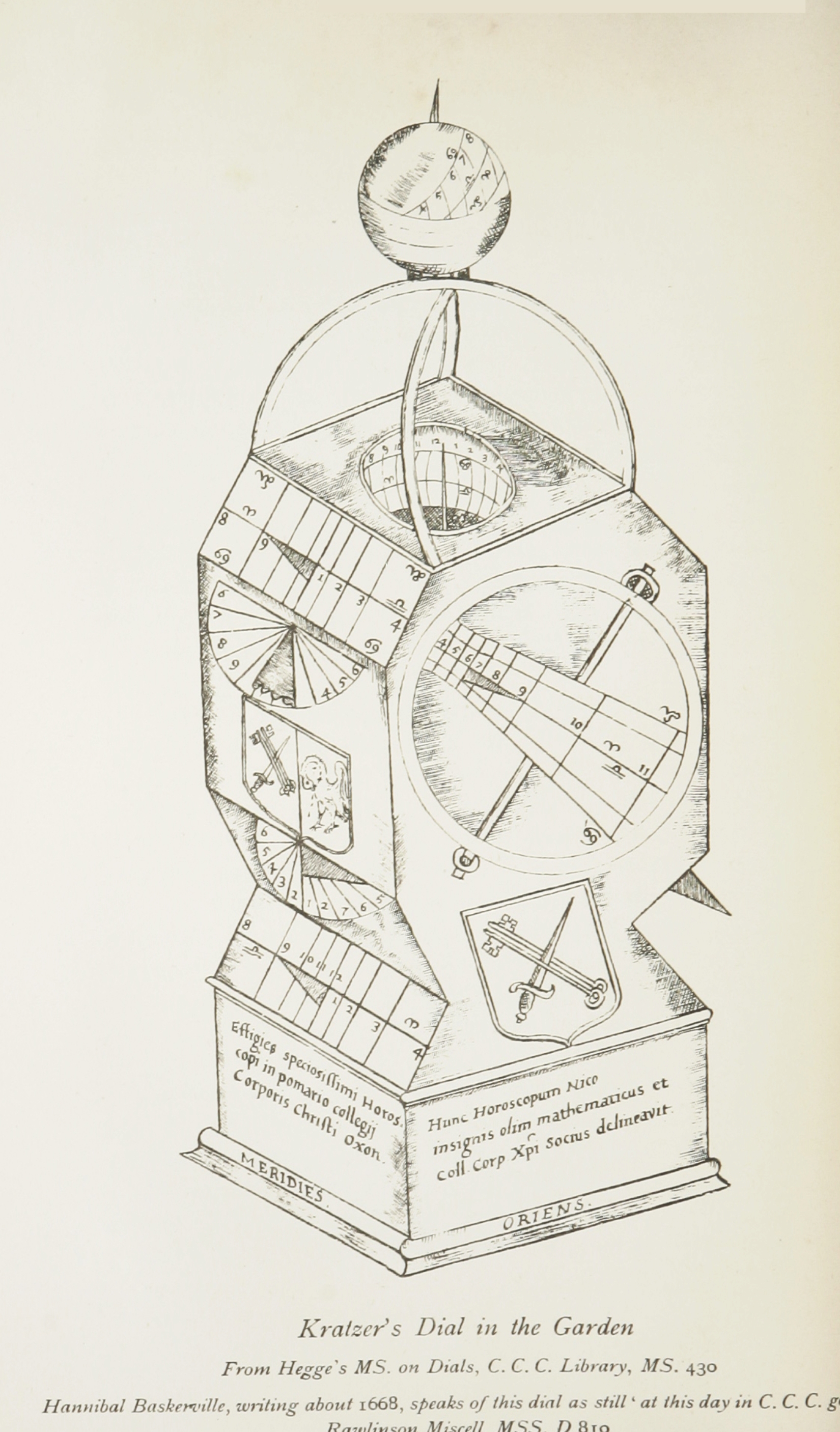Nicholas Kratzer on:
[Wikipedia]
[Google]
[Amazon]
Nicholas Kratzer (1487? – 1550), also known as Nicolaus Kratzer and Nicholas Crutcher, was a German
 Kratzer also collaborated with Holbein on producing maps, and in return the artist produced a portrait of Kratzer in 1528 that now hangs in the
Kratzer also collaborated with Holbein on producing maps, and in return the artist produced a portrait of Kratzer in 1528 that now hangs in the
mathematician
A mathematician is someone who uses an extensive knowledge of mathematics in their work, typically to solve mathematical problems.
Mathematicians are concerned with numbers, data, quantity, structure, space, models, and change.
History
On ...
, astronomer, and horologist
Horology (; related to Latin '; ; , interfix ''-o-'', and suffix '' -logy''), . is the study of the measurement of time. Clocks, watches, clockwork, sundials, hourglasses, clepsydras, timers, time recorders, marine chronometers, and atomic ...
. Much of Kratzer's professional life was spent in England, where he was appointed as astronomer to King Henry VIII.
Life
Born inMunich
Munich ( ; german: München ; bar, Minga ) is the capital and most populous city of the States of Germany, German state of Bavaria. With a population of 1,558,395 inhabitants as of 31 July 2020, it is the List of cities in Germany by popu ...
in 1486 or 1487, Kratzer was the son of a saw-smith, and was educated at the Universities of Cologne
Cologne ( ; german: Köln ; ksh, Kölle ) is the largest city of the German western state of North Rhine-Westphalia (NRW) and the fourth-most populous city of Germany with 1.1 million inhabitants in the city proper and 3.6 millio ...
(B.A. 1509) and Wittenberg
Wittenberg ( , ; Low Saxon: ''Wittenbarg''; meaning ''White Mountain''; officially Lutherstadt Wittenberg (''Luther City Wittenberg'')), is the fourth largest town in Saxony-Anhalt, Germany. Wittenberg is situated on the River Elbe, north o ...
. He came to England in 1516 and established himself as part of the artistic and scientific circle around Sir Thomas More
Sir Thomas More (7 February 1478 – 6 July 1535), venerated in the Catholic Church as Saint Thomas More, was an English lawyer, judge, social philosopher, author, statesman, and noted Renaissance humanist. He also served Henry VIII as Lord ...
. Reprinted in: Kratzer tutored More's children in mathematics and astronomy and More introduced him at court in much the same way as he had their mutual friend Hans Holbein, who produced a portrait of Kratzer. In the same manner as Holbein, Kratzer's talents obtained him a court position as astronomer and clock maker to the king.
 Kratzer also collaborated with Holbein on producing maps, and in return the artist produced a portrait of Kratzer in 1528 that now hangs in the
Kratzer also collaborated with Holbein on producing maps, and in return the artist produced a portrait of Kratzer in 1528 that now hangs in the Louvre
The Louvre ( ), or the Louvre Museum ( ), is the world's most-visited museum, and an historic landmark in Paris, France. It is the home of some of the best-known works of art, including the ''Mona Lisa'' and the ''Venus de Milo''. A central l ...
; it depicts the craftsman surrounded by the tools of his trade, and with an unfinished polyhedral sundial
A sundial is a horological device that tells the time of day (referred to as civil time in modern usage) when direct sunlight shines by the apparent position of the Sun in the sky. In the narrowest sense of the word, it consists of a flat ...
. His close relationship with Holbein and More also may be observed in his annotations of Holbein's draft for his portrait of the More family. Kratzer identifies the various family members and their ages for the benefit of More's friend, the theologian Erasmus
Desiderius Erasmus Roterodamus (; ; English: Erasmus of Rotterdam or Erasmus;''Erasmus'' was his baptismal name, given after St. Erasmus of Formiae. ''Desiderius'' was an adopted additional name, which he used from 1496. The ''Roterodamus'' w ...
.
Kratzer (under the name Nich. Cratcherus) is recorded as a reader of Corpus Christi College, Oxford
Corpus Christi College (formally, Corpus Christi College in the University of Oxford; informally abbreviated as Corpus or CCC) is one of the constituent colleges of the University of Oxford in the United Kingdom. Founded in 1517, it is the 12t ...
, where he is presumed to have taught mathematics.. See in particular pp 84–7. He designed at least two fixed sundials in Oxford, neither of which now exist. One was in St Mary's churchyard, the other in the garden of Corpus Christi. He also designed a portable dial for Cardinal Wolsey, which is now in the History of Science Museum, Oxford
The History of Science Museum in Broad Street, Oxford, England, holds a leading collection of scientific instruments from Middle Ages to the 19th century. The museum building is also known as the Old Ashmolean Building to distinguish it from th ...
. Another dial attributed to Kratzer was found at Acton Court, near Bristol, in the 1980s.
Peter Drinkwater has presented a critical evaluation of the sundials attributed to Kratzer, in particular the one in the Holbein portrait. He comments that "Kratzer triumphed, not through genius or creativity, but through having learned what others had discovered and invented, and by being the first to apply that learning in England". John North concurs: "Kratzer doubtless had nothing new to offer of a fundamental kind. Many of his dials were unusual, but his favorite polyhedral dial was perhaps more useful as a repository of verses ..than for actually announcing the time with any accuracy". Nonetheless, Kratzer brought useful German skills and knowledge to the English court and was well-regarded over a period of nearly 30 years.
References
Further reading
* * * {{DEFAULTSORT:Kratzer, Nicholas 1480s births 1550 deaths Scientists from Munich German clockmakers 16th-century German astronomers 16th-century German mathematicians